Green Roofs: Companion planting
Green roofs have become an integral part of sustainable building practices in Toronto over the past decade since the adoption of the bylaw in 2009. One of the primary rationales is their contribution to stormwater management, alleviating the pressure on aging and inadequate urban water systems through localized water retention. In parallel, green roofs have been incorporated into strategic municipal documents that advocate for the protection or restoration of biodiversity, compensating for the massive loss of vegetative cover. Although studies have correlated plant endurance and diversity with water availability, little attention has been given to the ways in which green roof plants mediate the water cycle. To do so, three fields of study, biology, hydrology and landscape architecture, were joined together, at the University of Toronto GRIT Lab, to study plant physiology and transpiration mechanism in relation to water retention and design decisions.
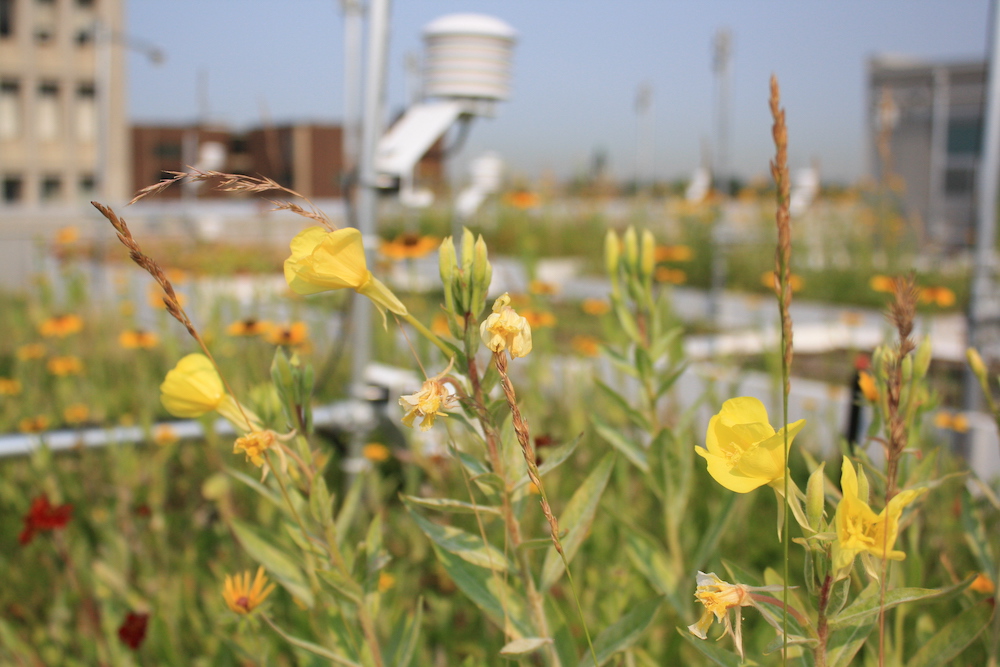
A GRIT Lab study published in 2017 quantified stormwater management relative to four design factors: growing media composition (mineral aggregate versus wood-based compost), media depth (10 cm versus 15 cm), plant selection (sedum versus grasses and forbs), and irrigation treatment (none, daily, on demand—soil moisture sensor activated). Unsurprisingly, irrigation proved to be the most critical factor to runoff reduction, with daily irrigation decreasing retention by 10 per cent from 70 per cent. In second place was the growth media composition, where the biologically derived outperformed the mineral media. The small difference in depth did not prove to be significant, nor did plant selection. So, as long as on-demand or no-irrigation and biologically-derived media are used, planting design can be left to meet other environmental objectives such as aesthetics and the provision of pollinator habitat. These findings left our research team seeking a more nuanced understanding of plant function in relation to the water cycle.
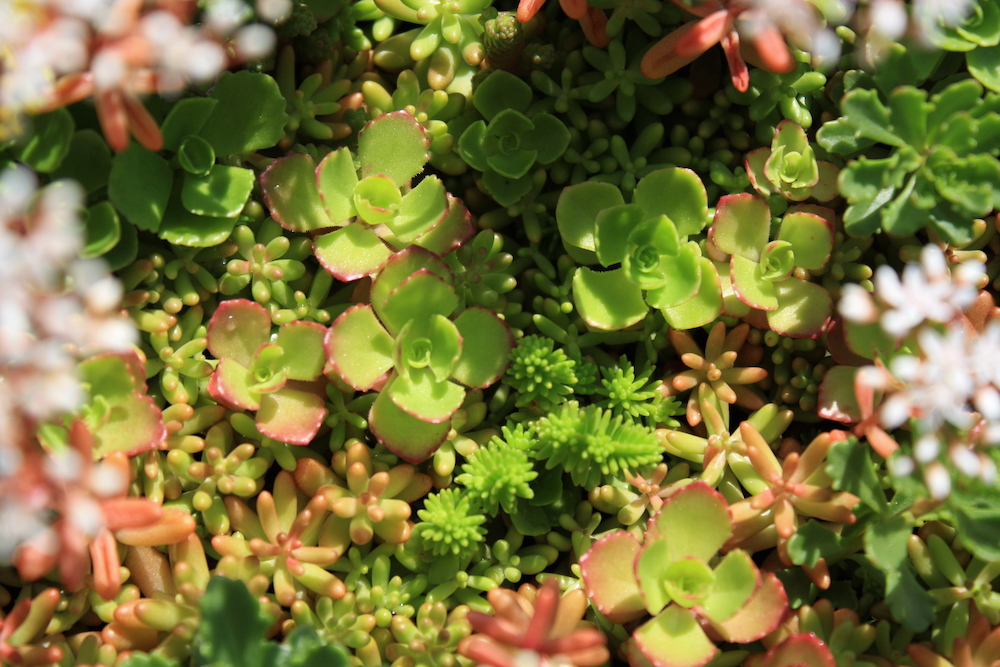
The profession’s preference for pre-seeded sedum mats has kept sedums and forbs separate in green roof planting design. Associated with rapid establishment, sedums require no maintenance nor irrigation to maintain 80 per cent minimum cover, which is the bylaw’s requirement. On the other hand, grasses and forbs, even the hardiest ones, require supplementary irrigation and nutrients to maintain cover and diversity, as well as annual maintenance. This difference in cost may contribute to this trend, however certain assumptions may also be at play. For example, despite the great numbers of projects using mineral media, our studies show that sedum thrives far better in biologically derived media. The other assumption that has shaped industry practices is that sedum and forbs cannot be mixed. Certainly, the pre-vegetated mat made of non-biodegradable polymer geotextile presents a barrier to roots. However, our findings show that, once combined, sedums and forbs have complimentary characteristics.
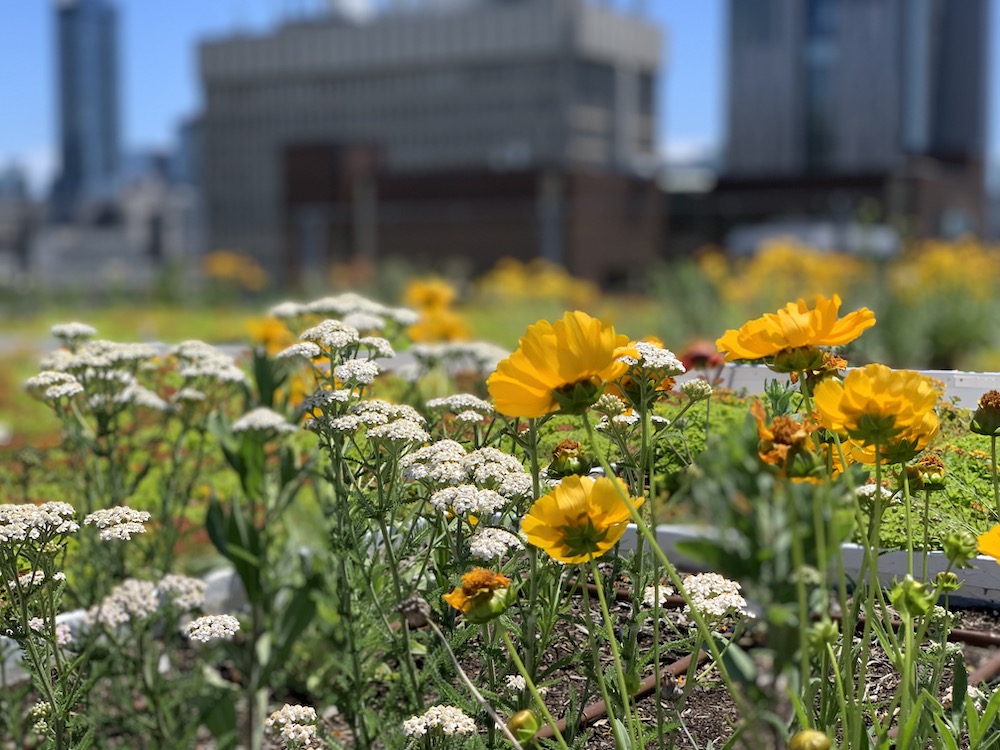
Plants retain water through three different mechanisms: water consumed through the roots which remains in the biomass, water transpired through the leaves during photosynthesis, and water intercepted by the leaves which then evaporates off the surface. In our experiment, we sampled three species of each plant community: grass-forb-wildflower; and broad, rigid, cylindrical-form sedums. Soil moisture and biomass were measured daily, and transpiration was calculated using a leaf porometer to measure moisture conductance from leaf stomata. Interception rates during rain events were collected by removing surface water from leaves with laboratory tissues, measuring difference in weight between dry and wet tissue.
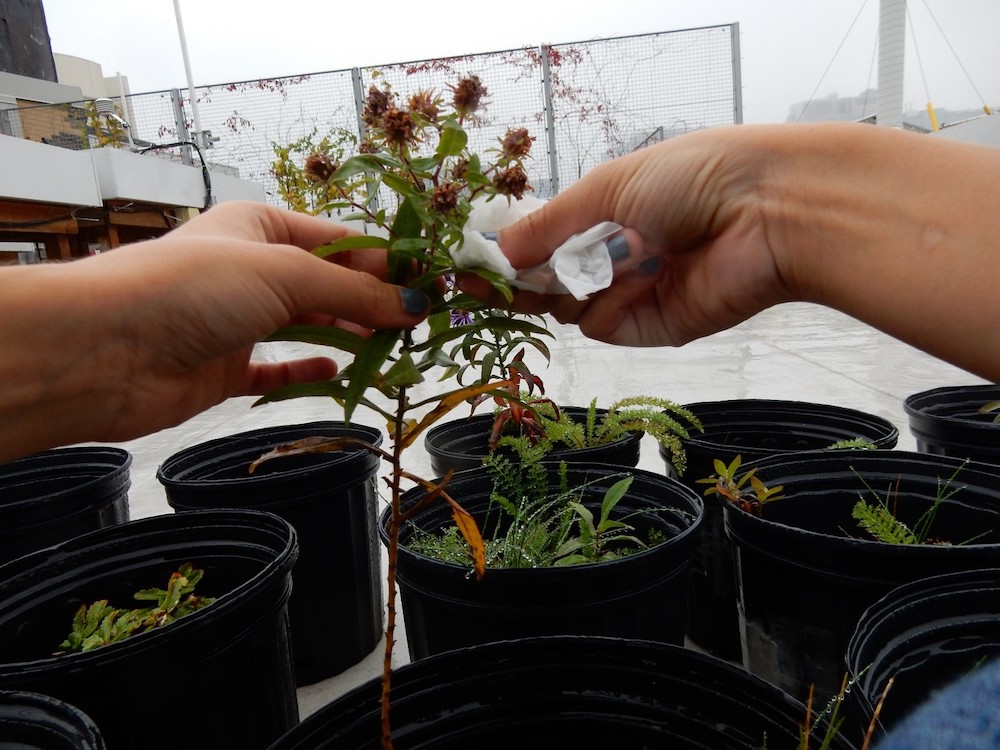
We discovered that the two plant types respond to environmental conditions in different, but mutually beneficial ways. Broad-leaf sedum species, such as Sedum ellacombianum, kamtschaticum and spurium have a waxy, cup-like form, providing immediate capture and evaporation, intercepting 70 per cent more water than forbs. However, sedum transpiration rates are low compared to grasses and forbs, which transpire 130 per cent more with significantly less cover.
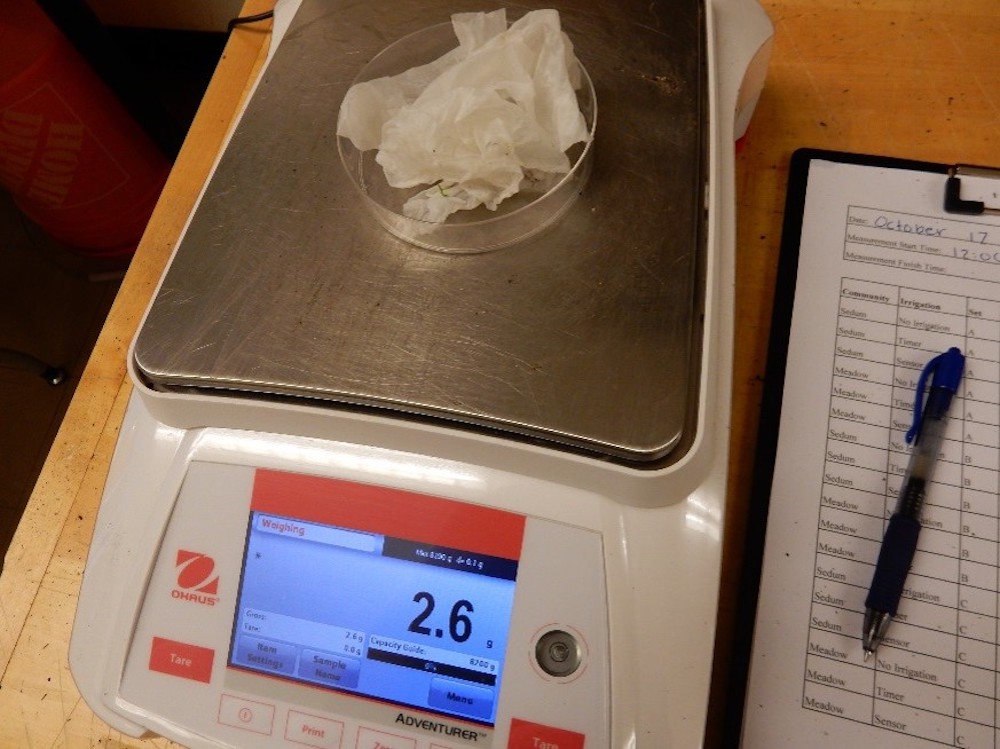
With respect to stormwater management, the benefit of intermixing sedums, grasses, and forbs is allowing for plant mechanisms to operate at different timescales and under various weather conditions. This provides both immediate and continuous stormwater retention. In other words, intercepted water evaporates quickly following a rain event which plays a role in reducing peak surface flow. On a longer time scale, water which infiltrates into the soil and is taken up by plant biomass transpires hours to days later in conjunction with photosynthesis. This delay is important at two spatial and time scales: at a local level, transpiration increases urban cooling, and at the scale of the hydrologic cycle, the elapsed time between rainfall event and evaporation potentially reduces the storm’s rainfall intensity. Ultimately, these scientific experiments help to re-centre the conversation on the role of the landscape architect in green roof planting design—which would otherwise be determined by green roof manufacturers—and the ways in which we can enhance the environmental benefits of living green infrastructure.
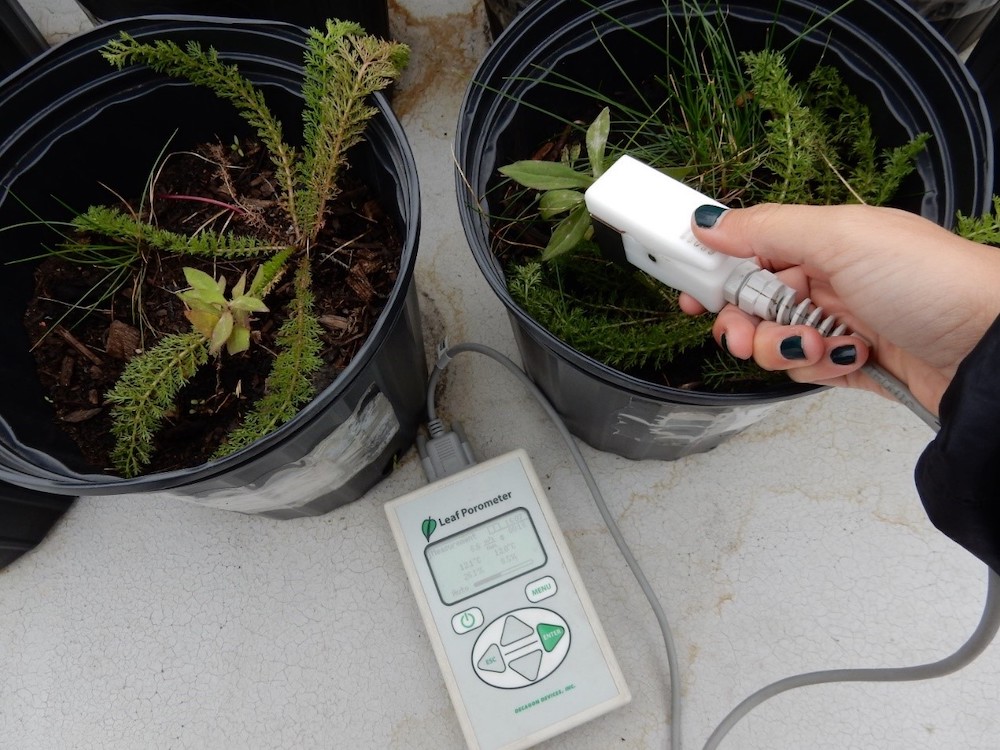
Acknowledgements: this article is based on the PhD and MSc research work of Jenny Hill and Marisa Fryer, respectively, and the supervisory work of Professors Jennifer Drake, Scott MacIvor, and Liat Margolis.
Text by Samantha Miotto, a second year Master of Landscape Architecture student, studying at the University of Toronto and research assistant at the GRIT Lab, working under the supervision of Liat Margolis.
